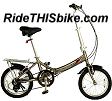7 Bike Trail Benefits
Over the last few decades, the benefits of bike trails have become more obvious. Besides being pleasant places to go bicycling, studies are showing that bike trails and other greenways improve air quality, health, reduce crime, mitigate summer heat, improve property values, spur tourism revenue, prompt economic growth, increase worker productivity and job satisfaction. In fact, the greenery of a trail can even boost community pride & appeal.
- Landscaped bike paths improve air quality.
Plants are the ultimate means of filtering smoke, dust and other pollutants from the air. Just one tree can remove 26 pounds per year of carbon dioxide from the atmosphere, offsetting 11,000 miles of car emissions. In one study showed, an acre of trees removed 13 tons per year of particles and gases.
- Bike trails promote health.
People are more likely to exercise regularly when a fitness facility like a bike trail is nearby. According to a National Park Service study, claims against medical insurance by people who exercise regularly are 14 percent lower than those that do not exercise. Hospital stays of people that are not fit are also 30% longer.
- Trails reduce crime.
University of Illinois researchers found that inner city areas with flowers, low growing shrubs and widely spaced, high canopy trees have half the crime of similar areas devoid of greenery. Their research showed that landscaping/greenery drew people outdoors and improved self esteem while also reducing fatigue, irritability, aggression and impulsive behavior like vandalism. Since trails also bring residents outdoors, criminal behavior is even harder to conceal.
- Bike Trails mitigate/lower summer heat.
According to the EPA, urban forests (such as bike trails landscaped with trees and shrubs) significantly reduce urban air temperatures through evaporative cooling (greenery exhales water vapor) and by shading buildings, concrete and other heat absorbing materials.
- Cycleways improve property values.
According to studies conducted in Boulder, Colorado, the average value of property adjacent to the greenbelt would be 32% higher than those 3,200 feet away. Psychologist Rachel Kaplan found landscaped places for walking and biking to be among the most important factors considered when individuals chose a place to live.
- Multi use trails spur tourism revenue.
Trails are an attraction for tourism and recreation. The Great Allegheny Passage Rail-Trail attracts 500,000 tourists annually, generating $15 million in direct benefits per year to adjacent communities. A National Park Service study estimated the average economic activity associated with three multi-purpose trails in Florida, California and Iowa at $1.5 million per year.
- Bikeways prompt economic growth, improve job satisfaction & worker productivity.
A long corridor of greenery such as a bike trail can benefit hundreds of businesses along its path. Besides making business steadier for cafes, stores & bike shops situated nearby, trails attract businesses and jobs. Studies have shown that workers feel better about their work and are more productive, healthier and more relaxed when they can see greenery outside or can use a trail on their lunch break or before/after work.
- Trails boost community pride and appeal.
Corridors of greenspace (such as tree lined bike trails, streets and parks) are second only to education in the perceived value of municipal services. Greenery also improves the perception of an area and has been effective at drawing customers & residents back to living and doing business nearby.
For more information on this topic, see "The Value of Landscaping", "Green Streets, Not Mean Streets", "The Role of Horticulture in Human Well-Being and Social Development" and "The Economic and Social Benefits of Off-Road Bicycle and Pedestrian Facilities."
Labels: bike trail benefits, National Park Service









